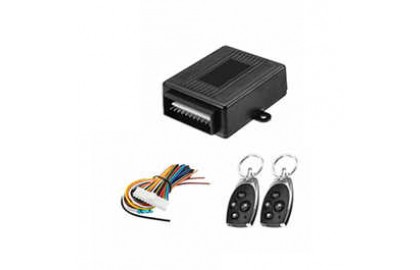Basic Knowledge about car alarm

Most of us know car alarms are an important part of a vehicle security system, but how do car alarms work? In this article, we’ll look at how car alarms work and the technology that they use to keep your vehicle safe. Read on to learn more about the technology that goes into a modern car alarm.
What is a Car Alarm?
The main purpose of a car alarm is to prevent the theft of your personal belongings within the vehicle and to prevent the theft of the vehicle itself. That said, not all car alarms are the same. Some are triggered by different actions and have different features. OEM Car alarms tend to have basic features compared to aftermarket systems.
OEM vs Aftermarket
OEM car alarms typically come with basic car alarm features. These features are usually limited to 1-way remote door locks, 1-way remote start, starter/injector kill, and horn trigger. Most are designed only to prevent vehicle theft and are not designed to protect your belongings.
Aftermarket alarm systems offer a wider array of components and features that can be added to beef up your security. The addition of an aftermarket car alarm using just the basic features can significantly increase your vehicle’s security.
Components of a car alarm
Car alarms are made up of several different parts. Broken down into the most basic categories, today’s car alarms are made up of a computer, a receiver that responds to your keycode, a loudspeaker and several different sensors.
The way a car alarm works is simple: when the alarm is switched on and a sensor receives a response, the alarm sounds. When the sensors don’t record any unusual activity, the car alarm remains active but silent and unnoticeable.
Older car alarms usually only included one or two sensors – typically a door sensor and a tilt/shock sensor. Today, car alarms – particularly alarms fitted to expensive vehicles – can include anywhere from two to ten different sensors.
Car Alarm sensors
Modern car alarms are designed to respond to a variety of different security threats that can lead to car theft or other car crime. These include the risk of a break-in via a car door, damage from impact and even loud noise in the vicinity of the car itself.
All of these sensors are connected to the alarm’s computer. If one of the sensors is activated by a potential car thief, the sensor sends a signal to the computer and the alarm is activated, preventing theft or damage.
Door sensors
Door sensors are the most common sensors used in modern car alarms. When the alarm is active, the sensors send a signal to the alarm. If a car thief opens the door, the alarm sounds.Since most car thefts require the thief to break open your car’s lock and enter the vehicle, door sensors are very effective in deterring theft. However, they usually don’t prevent a thief from breaking a window to enter your car or towing it away.
Shock/Impact Sensors
Door sensors can stop a thief from breaking open your car’s door, but can they stop someone from breaking a window to enter your car? Shock sensors detect hits and impacts around your car, such as the shock of someone breaking a window.
Shock sensors work by detecting when an impact occurs. If someone smashes one of your car’s windows, the shock sensor detects this impact and transmits an alert to the alarm’s computer. The car alarm is then activated.Since shock sensors sound your car alarm whenever any impact occurs, they might occasionally activate accidentally. If someone accidentally opens their door into the side of your car while parking, the impact could be strong enough activate the alarm.
Microphone sensors
Since your car’s door alarms prevent thieves from picking its locks and the impact sensors prevent them from smashing a window, thieves have fewer options to get into your car and drive it away.
However, they can still break a window using less impact, letting them get into the car. Microphone sensors prevent thieves from breaking into your car by monitoring for loud, sudden noises such as a window breaking.
Modern microphone sensors are designed to account for the ambient sound level in the area close to your car. This means that in noisy areas, the sensor will listen for a sudden change in sound level that could indicate a break-in taking place.
Tilt sensors
Thieves don’t necessarily need to break into your car in order to steal it. A car thief with a tow truck could simply lift up your vehicle and tow it away in order to strip it for parts and sell it to someone else.
Tilt sensors prevent thieves from towing your car away by monitoring the angle of your car. If your car’s angle changes, the tilt sensor sends a signal to the computer, which activates the alarm.
Modern tilt sensors use mercury, which conducts electricity, to monitor a car’s tilt level. If the car’s angle suddenly changes, the mercury flows to one side and causes the switch to activate, sounding the alarm.
Proximity sensors
Proximity sensors, which are also known as perimeter scanners, work by scanning the area around your car. These types of sensors are typically found in newer cars, particularly high-end models.
Since proximity sensors monitor activity around your vehicle, they can often trigger false alarms. Most modern proximity sensors are designed to calculate how close an object is to your car and only activate if it becomes extremely close.
Is Your car protected from theft?
Elecdeer is a brand focus on manufacturing and exporting electronic parts for over 16 years. Mr.John starts the business with 1 founder in a small apartment to sell connectors and metal. This is where dreams set sail. To meet the growing demand for diversified products and small-batch orders, we start Elecdeer online E-commerce project. Now, you could get more car & moto accessories from the original factory via Elecdeer.
